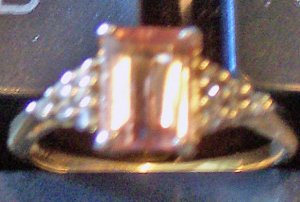FD21Bride
Shiny_Rock
- Joined
- Aug 17, 2005
- Messages
- 220
I have a 1.5 ct emerald cut topaz that I bought quite a few years ago from a local jeweler. It is a light pink to peach color. the jeweler called it "precious" topaz.
When I look up "precious" topaz on the internet they say it is a yellowish color.
Unfortunately, right now I do not have pictures...I''m working on that.
From my very general description above...what is the name of this peachy/pink colored topaz?
When I look up "precious" topaz on the internet they say it is a yellowish color.
Unfortunately, right now I do not have pictures...I''m working on that.
From my very general description above...what is the name of this peachy/pink colored topaz?


















300x240.png)